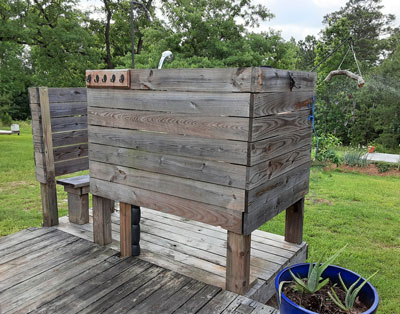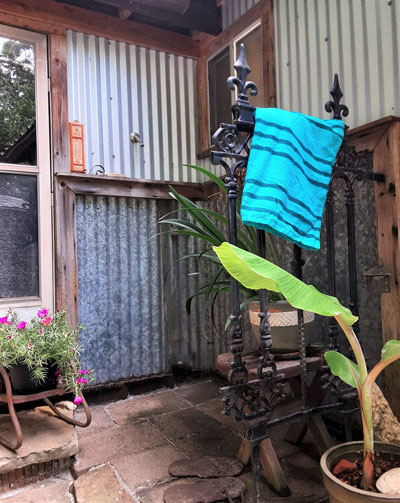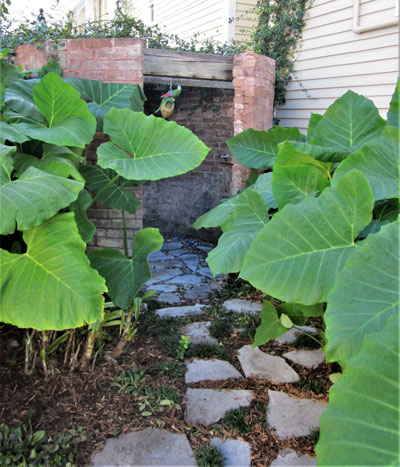Outdoor showers … more than a summer memory
Some 30 years ago, a writer for The New York Times referred to the outdoor shower as an “American classic.” It was then, and it is now. After all, who doesn’t remember being a kid and dancing gingerly under the cold spray of an outdoor shower as it washed away sand, salt, and surf during a summer vacation.
But increasingly, the stark pipes and basic showerheads of our summer memories have gussied-up and moved from the beach to our gardens.
It’s not surprising.
Whether it’s rinsing the grime off kids, washing the mud off dogs, or cleaning the garden debris off gardeners, outdoor showers keep the dirt outside. They are a handy spot to cool down after jogging or shooting hoops. When combined with a changing area at poolside, they eliminate wet, slippery footprints through the house. Likewise, at cabins and lake houses, outdoor showers provide a place to rinse off nature’s residue, outdoors.

But it’s not just about cleaning up, cooling down, and convenience.
Extra amenities — an oversized rain-style showerhead, benches for seating, shelves for storage, copper fixtures, swanky bath products — can transform even the most basic backyard shower into a luxury site where everyday showering resembles a trip to the spa.
Technically, an outdoor shower can range from a hose hooked up to a showerhead for a basic, low-cost cold water blast, to a feature-filled, custom-built enclosure equipped with hot and cold water, piped in music, and lighting.

Whether you want something simple or maybe elaborate, begin your outdoor shower project by determining its location. It’s easier and more economical to build a shower on a deck or patio near the existing hot and cold water lines of the house than to run the lines to a remote corner of the yard. But getting water to the shower is only half of the challenge. Drainage, too, requires planning. Check local building codes to see if you can divert the runoff into the garden or if it requires plumbing. And don’t forget shut-off valves. They make repairs easier, and they are necessary in order to drain the pipes during freezing weather.

For do-it-yourselfers, experts recommend making outdoor shower enclosures at least 3 feet square — larger if you have the space and materials. Enclosures 7-foot-long by 4-foot-wide accommodate a shower and dressing area. Some showers have slatted walls and a walk-through design; others have solid walls and a door that closes for privacy.
When selecting materials, think simple, low maintenance, and weather resistant.

Walls and benches made of cedar, teak, or pressure-treated wood are long-lasting and have a pleasing, natural appearance. Likewise, floors made of smooth stone or re-purposed bricks are durable and natural looking, plus they are easy on the feet. Fixtures, too, should be practical. Bronze and copper fixtures age gracefully — their luster fades into a pleasing patina. For seaside locations install corrosion-resistant stainless steel.
Whether you want to wash up by the back door after yard work, rinse off after a swim, or soak in the sights, sounds, and sensations of birds and breezes in a remote corner of the yard, an outdoor shower can make the occasion more than a memory.
Like hotdogs and baseball, they’ve long been a part of American summers.
